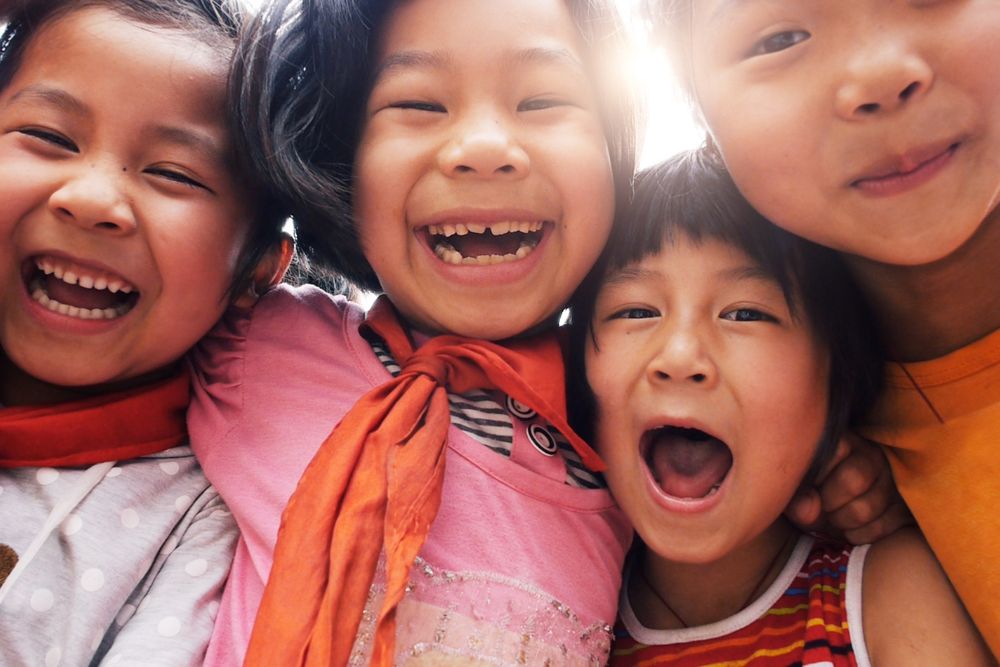
You’re at the park watching your grandchildren play, and with photography tips on hand, you’ll be able to capture each precious expression. This is about preserving life’s precious moments and the emotions that come with them.
For seniors, photographing grandchildren can be especially rewarding, as it preserves such precious moments.
Besides the emotional rewards, photography is a wonderful hobby too.
It can help boost your brain power, get you moving, develop your attention to detail, combat isolation, and help express your emotions.
So, whether you’re a beginner or an enthusiast, you can use your camera or mobile phone to create beautiful and mesmerising images that reflect these experiences.
Advertisement
In essence:
- Start with your mobile phone camera. You don’t need to invest in expensive equipment to take great photos. Your mobile phone camera can help you learn the basics of photography, such as composition, lighting, and editing. You can also use apps like ProCamera for iPhone users, or ReLens if you’re using an Android mobile phone to enhance your photography experience and share them with others.
- Consider an entry-level mirrorless or DSLR camera. If you want more control and better picture quality, you can upgrade to a mirrorless or DSLR camera. These cameras have features and functions that help give you more control over how you want your images to come out. You can also change lenses to suit different shooting situations and styles.
- Join a local photography club or class. One of the best ways to improve your photography skills is to learn from others or being mentored. You can also meet new friends who share your passion and have fun together.
- Practice foundational techniques. To take amazing photos, you need to master some foundational techniques, such as the rule of thirds, golden hour, natural light, and editing. Practice these techniques by taking photos of different subjects, such as your family, your pets, the flowers in your garden or park, or your neighbourhood. You can also experiment with different angles, perspectives, and settings to create interesting effects.

In this article, I will share some tips and tricks to help you take better photos of your grandchildren.
You will learn how to prepare your gear, capture the moment, express emotion and personality and, importantly, understand the psychology of kids in such situations. You will also discover some additional pro-tips to enhance your photography skills and enjoyment.
Technical photography tips to start with
Before you start taking photos, you need to make sure that your gear is ready. Here are some things to check and adjust before you press the shutter button.
- Clean lenses:
Whether you use a mobile phone, compact, mirrorless or DSLR, a dirty lens can ruin your photos by making them blurry or smudgy.
To avoid this, you should always clean your lens before taking photos. You can use a microfiber cloth or a lens cleaning brush to gently wipe away any dust, fingerprints, or smears. This will ensure that your photos are sharp and clear.
- Set focus:
Focus is one of the most important aspects of photography, as it determines what part of the image is sharp and what part is blurry. You can use either manual or automatic focus methods to achieve the desired effect.
Manual focus gives you more control and precision, but it can be tricky to use with moving subjects. Automatic focus is easier and faster, but it can sometimes miss the mark or focus on the wrong thing.
To use automatic focus, you need to tap on the screen (if using a mobile phone) or press the shutter button halfway (if using a camera) to lock the focus on your subject.
You can also use the face detection feature (if available) to automatically focus on the faces of your children or grandchildren.
- Adjust exposure:
Exposure is the amount of light that reaches your sensor. It affects how bright or dark your photos are. You can use the exposure compensation or HDR (High Dynamic Range) features to adjust the exposure of your photos.
Exposure compensation allows you to make your photos brighter or darker by adding or subtracting light.
HDR combines multiple photos with different exposures to create a balanced image that preserves the details in both the shadows and the highlights.
You can use these features to avoid overexposed or underexposed photos that lose details or colours.
Photography tips to capture the moment

Once your gear is ready, you can start your session. Here are some photography tips to make your photos more interesting and dynamic:
- Portrait mode:
Portrait mode is a feature found on mobile phones and conventional cameras that create a shallow depth of field, which means that the background is blurred while the subject is in focus and brought to the fore.
The effect can make your photos more professional and artistic, as it draws attention to your subject and creates a sense of depth.
You can also use portrait mode to take close-up shots of your subject(s), highlighting their facial features and expressions. You can also use it to take group shots, making sure that everyone is in focus and the background is not distracting.
- Burst mode:
Burst mode is a feature that takes multiple photos in a row, usually by holding down the shutter button. This feature is useful for capturing fleeting moments and expressions, such as smiles, laughs, or surprises.
You can use burst mode to take photos of your grandchildren when they are playing, jumping, running, or simply just being themselves.
You can then select the best photo from the series or create a collage or slideshow of the sequence.
- Switching lenses (advanced):
If you have a camera with interchangeable lenses, you can switch between different lenses to explore different perspectives and effects.
For example,
- you can use a wide-angle lens to capture more of the scene and create a sense of space.
- you can use a telephoto lens to zoom in on your subject and create a sense of intimacy.
- you can use a macro lens to capture the details and textures of your subject and create a sense of wonder.
- you can use different lenses to create different moods and stories with your photos.
- Minimise camera shake:
Camera shake is the movement of the camera during the exposure, which causes blur and distortion.
To minimise camera shake,
- you should hold your camera or mobile phone firmly and steadily, using both hands if possible.
- you should also avoid sudden movements or jerks, and use a gentle touch when pressing the shutter button.
- you can also use the volume buttons (if using a mobile phone) or a remote control (if using a camera) to trigger the shutter without touching the device.
- Rule of thirds:
The rule of thirds is a compositional technique that divides the image into nine equal parts using two horizontal and two vertical lines.
This is my favourite technique and the idea is to place the main elements of the image along these lines or at their intersections, creating a balanced and aesthetically pleasing composition.
Remember, your subject need not be in the centre of the frame all the time.
You can use the rule of thirds to position your grandchild in the frame, leaving some negative space around them.
You can also use it to align the horizon or other elements of the background, creating a sense of harmony and order.
- Leading lines
Leading lines are lines that guide the viewer’s eye towards the main subject or point of interest in the image. They can be straight or curved, natural or artificial, such as roads, fences, bridges, streams, or branches.
You can use leading lines to create a sense of depth and direction in your photos, as well as to draw attention to your subject(s).
You can also use them to create a sense of movement and dynamism, especially if they are diagonal or converging.
Memorable photos capture emotion & personality

While technical prowess is crucial in photography, it’s the ability to capture the essence of your grandchildren’s emotions and personalities that truly creates memorable images.
These are the moments that form the core of your joy.
Here are a few photography tips to infuse your photos with life and character:
- Embrace the Unscripted Moments:
The magic of photography often lies in the unplanned, unposed snapshots that reveal the genuine reactions and candid moments of your loved ones.
Such images resonate with authenticity, capturing the true spirit and character of your family.
Stay vigilant and ready to seize those fleeting opportunities. Introduce an element of surprise with a gift or a playful gesture, and let your camera catch the spontaneity of their reactions.
- Foster Engagement and Connection:
Building a comfortable and playful atmosphere encourages your grandchildren to express themselves freely.
Engage with them through conversation, playful activities, and shared interests. Utilise their favourite toys or simple games to draw out their natural expressions.
This connection allows you to capture their joy and laughter, thus immortalising their happiness.
- Narrate Through Your Lens:
Your photographs can tell a compelling story, whether it’s a celebration, a family outing, or a tender embrace.
Document the narrative arc of these events from start to finish, paying attention to the details and the emotions they evoke.
An important photography tip is to experiment with various angles and perspectives to add depth and drama to your visual storytelling.
- Explore Varied Perspectives:
Adopting different viewpoints can transform the portrayal of your subjects, adding creativity to your compositions.
Experiment with your camera’s position — tilt it, move around, or adjust your distance — to capture your grandchildren in imaginative ways.
Play with perspective to create amusing optical illusions or to integrate them into the environment in playful interactions.
- Simplify Your Compositions:
Clarity in your photographs can enhance the emotional impact.
Opt for clean, uncluttered backgrounds and focus on the essential elements of your scene.
Crop closely, use portrait mode, or employ a shallow depth of field to draw attention to your subjects, highlighting their beauty and the emotions they convey.
- Showcase Unique Personalities:
Each child and grandchild has unique traits and talents that deserve the spotlight. Accentuate these individual characteristics in your photos to celebrate their distinct personalities.
Whether it’s a hobby, a quirky habit, or a signature smile, let these details shine through to create a heartfelt portrayal of who they are.
By incorporating these approaches and photography tips, you’ll not only improve the technical quality of your photos but also enrich them with the emotional depth and personal touch that make them truly special.
More fun & easy ways to spice up your photos

You don’t have to stop at the basics. There are more fun and easy ways to spice up your photos and make them look stunning.
These are optional, but they can really make a difference and enhance your photos.
- Natural light:
Natural light is the best friend of outdoor photography. It creates soft and flattering shadows and colours that make your photos come alive.
To use natural light to your advantage, you need to know when and where to shoot. The golden hour, which is the hour after sunrise or before sunset, is the best time to shoot. The light is warm and soft, and it gives your photos a magical glow.
Avoid shooting when the sun is high in the sky, or when the light is harsh and bright as it can ruin your photos and create harsh shadows. You can also shoot indoors, where you can use the windows, curtains, and lamps to create interesting lighting effects.
- Props and games:
Props and games can add some fun and creativity to your photos by capturing your grandchildren’s attention and natural responses.
For example, you can use balloons, bubbles, confetti, or flowers to create some colour and movement in your photos.
Or perhaps use their favourite toys, books, puzzles, or cards to keep them busy and challenged.
Another photography tip is to use costumes, masks, hats, or glasses to turn your grandchildren into different characters or animals, or use games, such as peek-a-boo, hide-and-seek, or tag, to make your children giggle, run, or jump.
- Patience and observation:
Patience and observation are key skills for photography. They help you wait for the perfect moment and capture the authentic expressions of your grandchildren.
You can improve your patience and observation by being ready and alert, taking your time to watch them, and by predicting their actions and reactions following their cues and interests.
Simply be flexible and adaptable, and by going with the flow of the situation.
- Editing for emotion:
Editing is the process of improving your photos after you take them, using software or apps. You can use editing to bring out the emotion and personality of your photos, as well as to fix any flaws or mistakes.
Don’t forget this photography tip: Adjust the brightness, contrast, saturation, and colour of your photos, to create a mood or a tone.
To further enhance it, use filters, effects, or frames, to create a style or a theme. Cropping, rotating, or resizing your photos, helps create a focus or a balance.
However, you should be careful not to over-edit your photos, as this can make them look unnatural or fake. Aim to keep the naturalness and the authenticity of your photos, as well as the happiness of your children and grandchildren.
- Storage and sharing:
Storage and sharing are the final steps of photography as they let you preserve your memories and spread your joy with others.
You can use storage and sharing to store your photos securely and safely, using devices or online services, or share them quickly and easily using online platforms or via print media.
For example, utilise a hard drive, cloud service, or an online photo album to store your photos.
You can also use a social media, messaging app, or print service to share your photos. Do remember to organise your photos neatly and logically, using folders, albums, or tags.
Conclusion
Remember, photography is more than just capturing images; it’s about capturing the essence of life’s precious moments with the people we love.
Don’t get discouraged if you don’t get it perfect every time. Embrace the photography tips, learning process, experiment, and most importantly, have fun!






